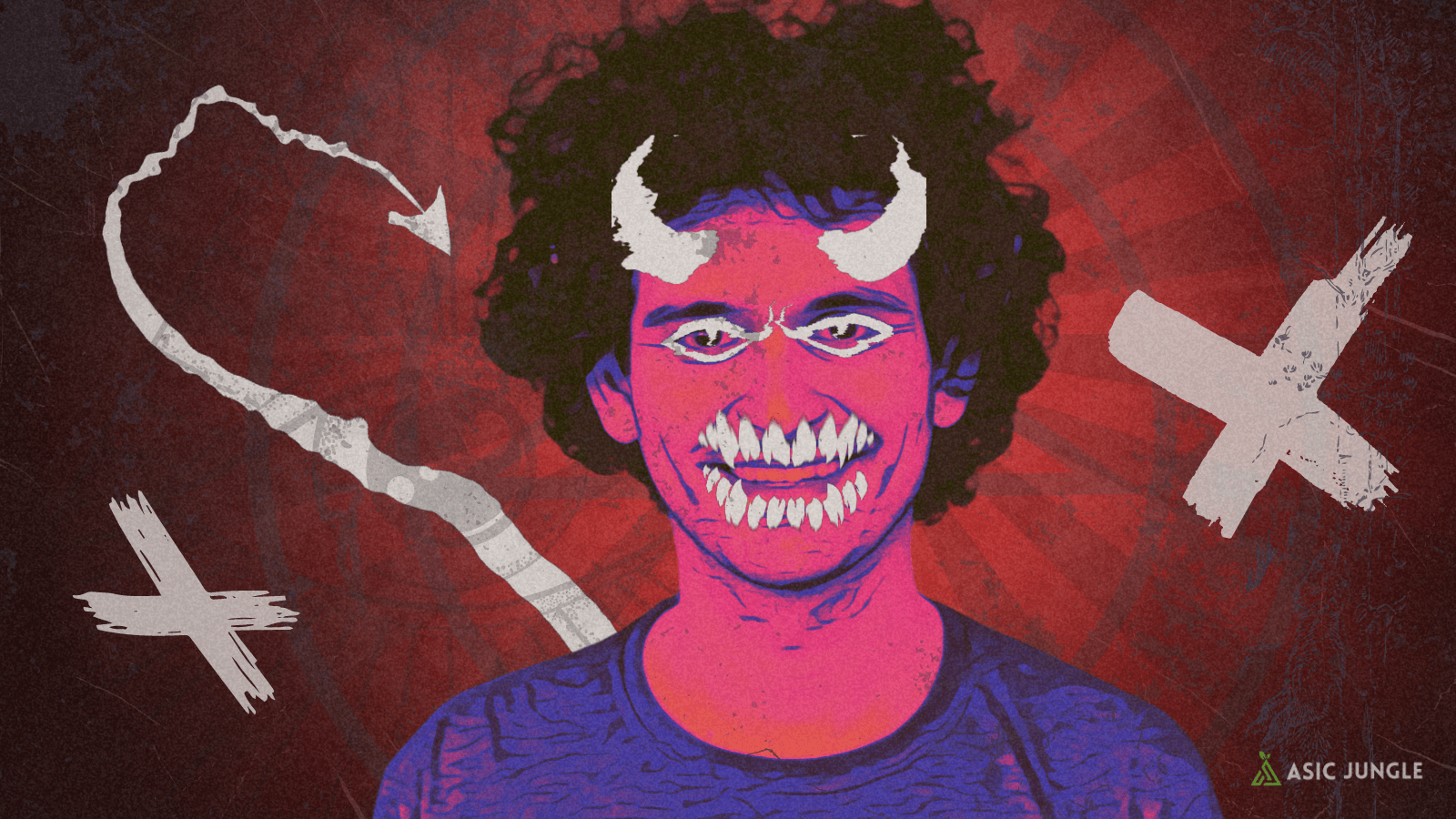For years, Bitcoin experts have been sharing warnings about the risks of cryptocurrency exchanges. The crypto landscape is notoriously fast-paced, with new exchanges and assets constantly emerging. Even for those with advanced knowledge who have conducted extensive research, it can be hard to know which projects are trustworthy and which are scams.
Fears associated with exchanges are not unfounded. Major exchange hacks, human error, and foul play have been a recurrent theme since the onset of cryptocurrency, which is important for users to familiarize with to limit their exposure to this constant risk. It is also important so users can differentiate their understanding between Bitcoin’s open and secure payment protocol and the rest of crypto.
Crypto exchanges that have been outright scams have been seen numerous times in the past, and users should be wary of any situation in which their Bitcoin is under custody by others. FTX's historic collapse puts a spotlight on Bitcoin's fundamental decentralization, security, and transparency, which makes it stand out in the chaotic, evolving cryptocurrency landscape.
The collapse of FTX exchange
One of the largest exchanges by trading volume, FTX, saw a spectacular collapse in November of 2022, plunging from a valuation of over $30 billion USD into bankruptcy because of an increasingly infamous liquidity crisis.
FTX’s collapse shows why it’s important to make a distinction between Bitcoin and the next big crypto play. At its core, the Bitcoin protocol remains the most fundamentally transparent, decentralized, and secure cryptocurrency specifically designed to prevent the type of moral hazards exhibited by FTX.
FTX is turning out to represent all that is worst about the crypto landscape—shady dealings, a lack of transparency, and a critical absence of respect for users and their funds. Let’s take a closer look at what went wrong at FTX, and how users can protect themselves and participate in the exciting future of Bitcoin.
What is FTX?
FTX—a name that stands for “futures exchange”—is a crypto exchange founded in the spring of 2019 by Sam Bankman-Fried and Gary Wang. FTX emerged out of a trading firm founded by Bankman-Fried and others called Alameda Research.
FTX exchange was initially lauded as a bold new enterprise, and the public was intrigued by its 28-year-old founder and how quickly the exchange grew in size and value.
Aggressive marketing campaigns—including Super Bowl commercials, naming an NBA arena, and high-profile celebrity endorsements—propelled FTX into the public consciousness.
Behind the scenes, FTX was grossly mismanaging funds, creating an unsustainable financial model that was bound to fail.
Why did FTX Collapse?
While some high-profile crypto exchanges have faced downfalls related to market volatility or unforeseen security breaches, the issues at FTX appear to have been based on systemic deception and mismanagement.
One of the first signs that something was deeply wrong at FTX was the revelation in early November 2022 that Alameda Research held billions of FTX’s native tokens: FTT.
When it was revealed that Alameda’s investment foundation was held in FTT—a token invented by its sister company—concern emerged that Bankman-Fried was using FTX funds to cover up solvency problems at Alameda.
This was revealed to indeed be the case, and Bankman-Fried is estimated to have taken billions of dollars worth of customer funds from the FTX exchange for use at his own trading firm.
What happened between FTX and Binance?
Shortly after the revelation was made that a large percentage of FTX funds were in custody of the exchange’s sister company, the world’s largest crypto exchange, Binance, announced it would be selling its FTT tokens as a precautionary move.
The FTT tokens sold by Binance were worth more than half a billion dollars, which lead to a bank run of users also looking to close their FTT positions, making the token’s value plummet. It was then, amidst this rush of attempted withdrawals from FTX customers, that the exchange’s liquidity problems emerged more fully.
In the following days, FTX customers attempted to withdraw billions from the exchange, and Bankman-Fried was searching for more venture capital money to pay customers with.
Did Binance buy FTX?
Binance made a deal to buy FTX’s non-U.S. business—a move that represented the biggest crypto exchange bailing out one of its rivals.
However, when Binance investigated FTX’s company structuring, they backed out of the deal, citing worries about how customer funds were being managed.
FTX high-profile endorsements
FTX’s perceived legitimacy was rooted in its surge in value, the authority passed on by celebrity spokespeople, and users’ lack of knowledge about the potential pitfalls of centralized crypto exchanges.
FTX’s commercials featured high-profile celebrities including Larry David, and athletes including Tom Brady, Steph Curry, and Shaq.
The general public may operate under the perception that beloved celebrities would not mislead them about dangerous investment opportunities. As the FTX debacle shows, this is a perception that needs to change.
The impacts of FTX's collapse
The collapse of FTX has had an impact across the crypto landscape. For instance, Cronos—the exchange token of Crypto.com—plummeted in value alongside FTX.
Those who run Crypto.com have assured customers that their cryptocurrency exchange is operating fine, but many have pointed out the similarities between the two exchanges, including extensive advertising and a sharp rise in value in a short period.
How is Bitcoin different?
The effects of FTX’s illicit deception of the crypto space is nothing to celebrate. Ordinary investors have been robbed of their hard-earned funds. Losses in value and trust in Bitcoin can impact Bitcoin miners, for instance, who invest extensive resources in the future of the cryptocurrency.
Is Bitcoin safe?
Bitcoin’s value hit its lowest point in two years in response to the widespread sell-offs on exchanges spurred on by market insecurity caused by FTX. However, the fundamentals behind Bitcoin remain unchanged.
Bitcoin itself sidesteps the issues associated with fraudulent players like Sam Bankman-Fried. It is only through the introduction of third-parties like exchanges and your best friend’s cousin that the risk of deception is possible with regard to Bitcoin.
Bitcoin is designed to be a trustless system, therefore interacting with the Bitcoin protocol directly is the only way ensure proper management of your funds.
How will Bitcoin be affected?
The crypto landscape is saturated with tokens created and managed by shady enterprises like FTX. Collapses like the one seen at FTX can slow (but not halt) the onset of public trust needed for Bitcoin's widespread adoption.
Some people are waking up
FTX’s collapse only reinforces the need for Bitcoin—which is an exciting proposition. It seems that this event is acting as a wake-up call for some people as to how different the true nature of Bitcoin is from the rest of the crypto landscape.
Appreciating Bitcoin
Ultimately, the FTX collapse reminds us of the importance of evaluating what makes Bitcoin different from the commonly accepted ideas of what crypto is. It also helps us to appreciate the level of security and consistency it provides.
Stay up to date with ASIC Magazine for ongoing insights and stay in touch for the latest opportunities in our community.






